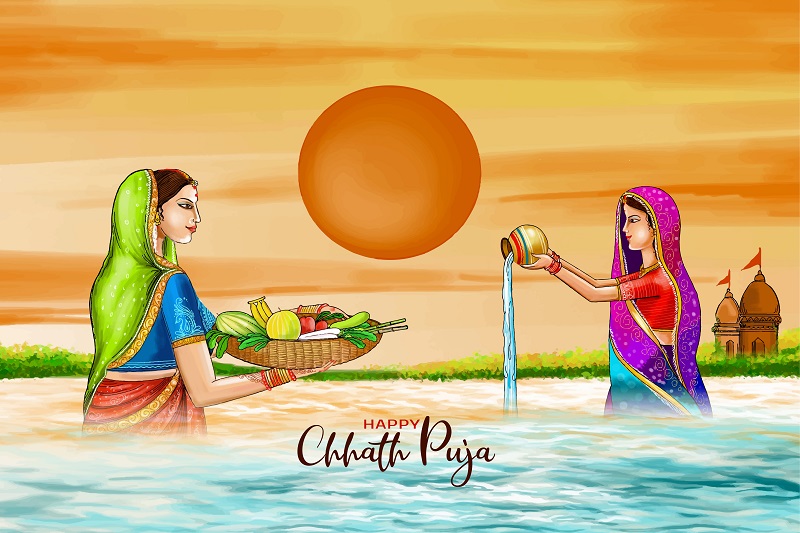Chhath Puja is one of the most ancient and spiritually revered Hindu festivals, celebrated with unwavering devotion and purity across Bihar, Jharkhand, eastern Uttar Pradesh, and Nepal. Dedicated to Surya Dev (the Sun God) and Chhathi Maiya, the goddess believed to be his sister, the festival symbolizes gratitude for life, health, and prosperity. It honors nature’s sustaining forces and embodies the deep connection between humanity and the cosmos.
Origin and Significance
Rooted in ancient Vedic traditions, Chhath Puja highlights the worship of natural elements—the Sun, water, and earth—as direct sources of energy and well-being. The term “Chhath” comes from the Hindi word for six, signifying the sixth day of the lunar month of Kartika, following Diwali. According to mythology, Karna, the son of Surya, is believed to be the first to observe Chhath Puja. It is also said that Lord Rama and Goddess Sita offered prayers to the Sun after returning to Ayodhya, setting an example of gratitude and faith.
Rituals and Observances
Chhath Puja is observed over four days, each day reflecting purity, self-discipline, and reverence.
- Nahay Khay (Bath and Eat)– The first day begins with devotees taking a holy dip in rivers or ponds, cleansing the body and soul. A simple satvik meal, usually of lauki-bhaat and chana dal, is prepared in a purified kitchen. This meal is consumed once, symbolizing the beginning of spiritual and physical discipline.
- Lohanda/Kharna (Sacred Fast)– On the second day, devotees observe a nirjala vrat—a fast without water—from sunrise to moonrise. In the evening, they offer kheer, roti, and fruits to Chhathi Maiya before partaking in the prasad. This ritual marks the start of a 36-hour fast of complete abstinence, symbolizing surrender and devotion.
- Sandhya Arghya (Evening Offering)– On the third day, devotees gather near rivers or ponds to offer arghya (water) to the setting sun. They carry offerings like fruits, thekua, sugarcane, and diyas in bamboo baskets. Worshipping the setting sun represents humility, gratitude, and acceptance of life’s cycles, accompanied by songs, prayers, and an atmosphere of deep spiritual connection.
- Usha Arghya (Morning Offering)– The final ritual is observed at sunrise on the fourth day. Devotees, standing in water, offer prayers to the rising sun and to Usha, the goddess of dawn. The fast is then broken, and prasad—especially thekua—is distributed among family, friends, and neighbors. The ritual symbolizes hope, renewal, and the triumph of light over darkness.
Cultural and Environmental Harmony
Chhath Puja is not merely a series of rituals but a profound lesson in devotion, discipline, and ecological awareness. The festival stands out for its simplicity and eco-friendliness—no idols, no artificial decorations, only natural offerings. It nurtures community unity and environmental respect, teaching that worshipping nature is the essence of gratitude and sustainability.


Recent Comments